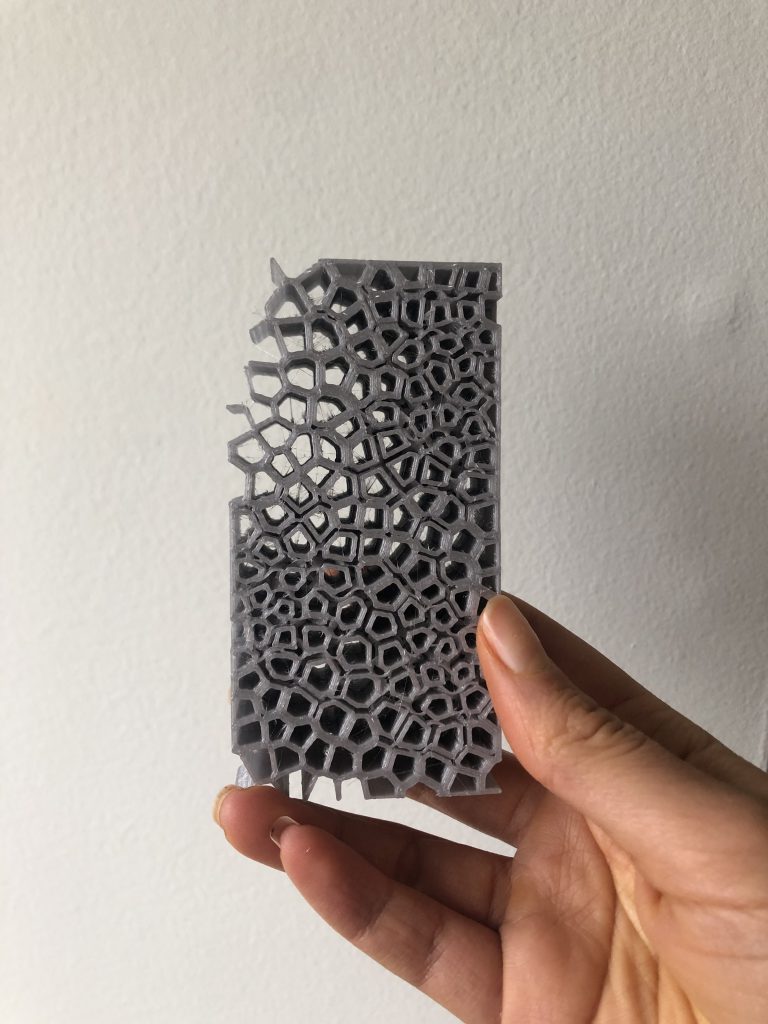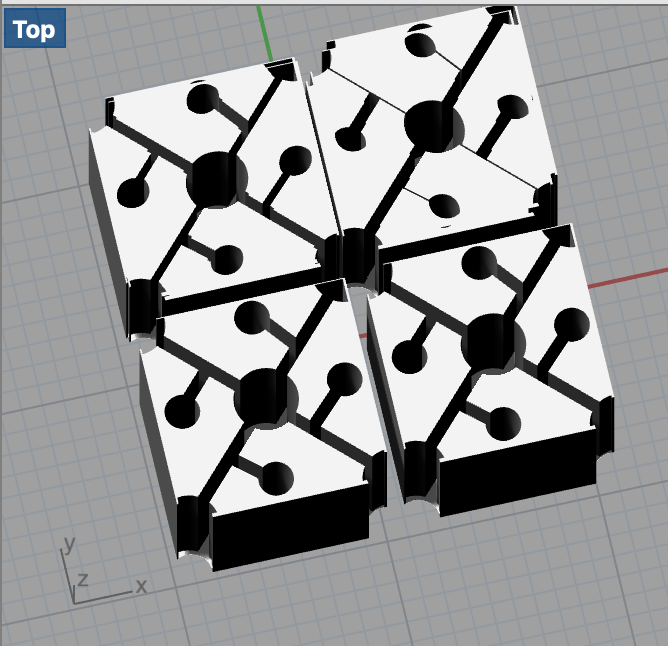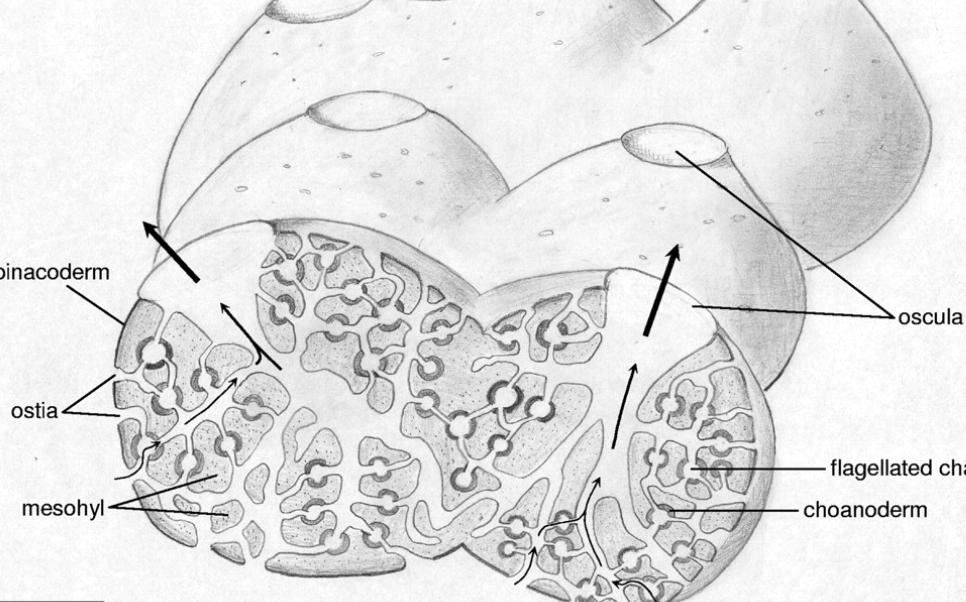Bacteria/Microbiomes, Holobionts, Symbiosis
~ Annick Saralegui
My project, Hydrodynamic Microbial Interfaces explores the relationship between structure, and microbial habitats on wastewater remediation. Porous geometries found on coral, and sponge architectures, act as hydrodynamic interfaces that support bacterial microbiomes. Coral Holobionts – assemblages of symboetic aquatic ecosystems, rely on structure and form for bioremedial activities like carbon fixation, water retainability nutrient transferring, and stress control. This project introduces biofabrication through 3D printing to speculate and simulate porous microniches as sites for microbial collaboration, holobiont formation and bioremediation. In addition my project draws on “niche theory” which predicts the role of micro niches of organisms as influencing the structure of ecological communities. To model the porous structures I looked at leuconoid sponge body plans and I applied voronoi tessellation to algorithmically calculate pore size and distance from other pores.
99% of microbes form bioremediation biofilms upon surface interactions, ( R Garrett) therefore designing porous environments that can allow microbes to form biofilms is especially important and necessary in thinking about radical ecologies. My work was heavily inspired by the work of my professor, Elizabeth Henaff, who similarly created concrete molds of microhabitats for microbes based on sponge body plans. In the future, I plan to make molds and do metagenomics research to see how, when the mold is placed in wastewater, the bacteria assemble and conduct their remedial activity.
Bio – Annick Saralegui
I am a Gallatin senior concentrating on Environment Design for the Regenerative Economy. As a climate concerned student I wanted to apply my creativity to cultivate net-positive environmental change. During my time at NYU, I have focused on learning biological principles through practical citizen science and explored opportunities to design biologically grown materials, architectures and products. I believe a cross-disciplinary approach that intersects design biology, and sustainable business can provide a fascinating lens from which to address our current climate crisis and propose bio-informed futures.




